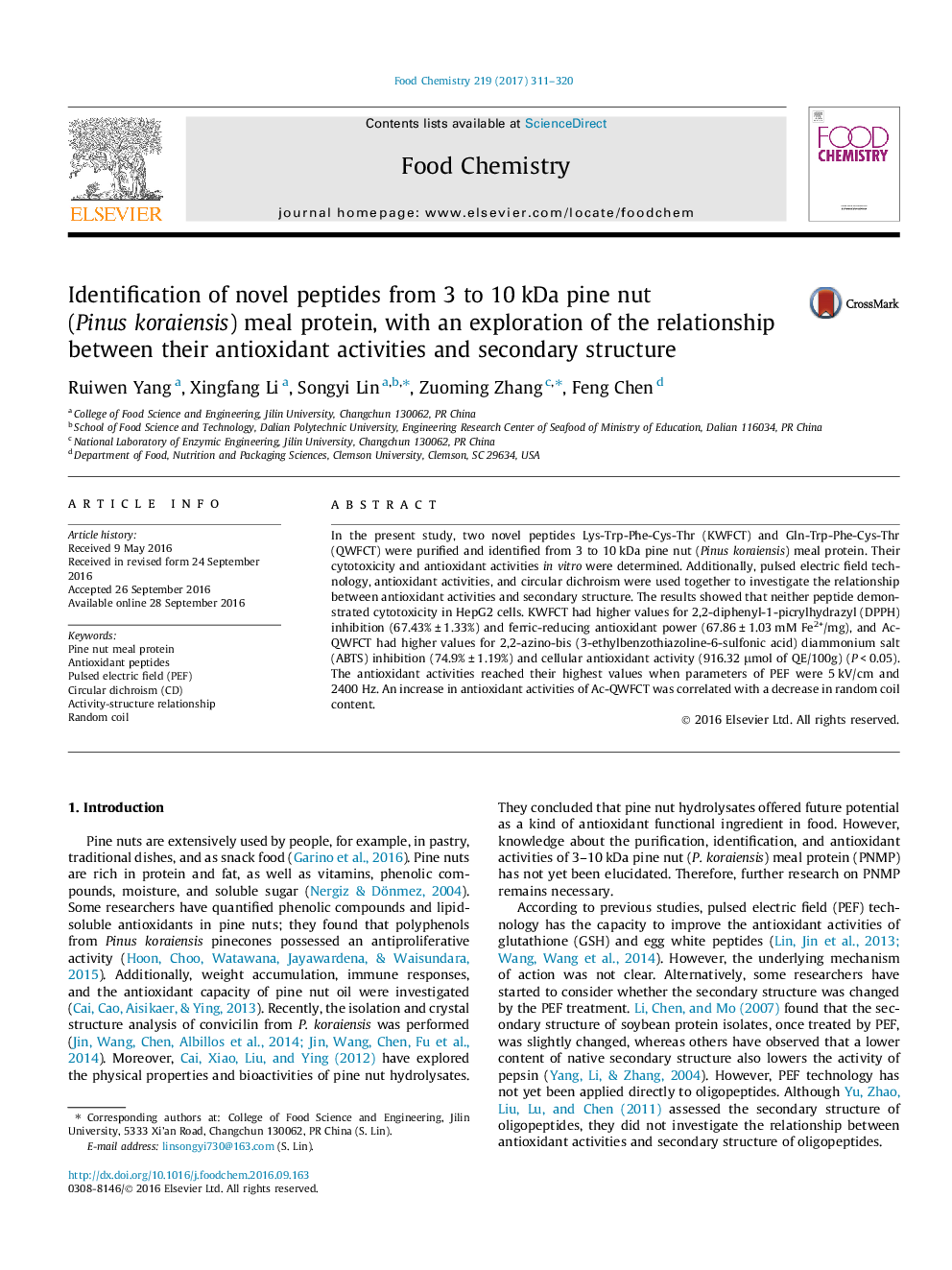| کد مقاله | کد نشریه | سال انتشار | مقاله انگلیسی | نسخه تمام متن |
|---|---|---|---|---|
| 5134154 | 1492073 | 2017 | 10 صفحه PDF | دانلود رایگان |

- Peptides KWFCT and QWFCT were purified and identified from 3 to 10Â kDa PNMP.
- Lys at N-terminal easily reacts with DPPH radicals and Fe3+-tripyridyltriazine.
- Ac-Gln at N-terminal is sensitive to ABTS and ABAP free radicals.
- Activity-structure relationship was explored by PEF and CD.
- Increase of antioxidant activities related to reduced content of random coil.
In the present study, two novel peptides Lys-Trp-Phe-Cys-Thr (KWFCT) and Gln-Trp-Phe-Cys-Thr (QWFCT) were purified and identified from 3 to 10 kDa pine nut (Pinus koraiensis) meal protein. Their cytotoxicity and antioxidant activities in vitro were determined. Additionally, pulsed electric field technology, antioxidant activities, and circular dichroism were used together to investigate the relationship between antioxidant activities and secondary structure. The results showed that neither peptide demonstrated cytotoxicity in HepG2 cells. KWFCT had higher values for 2,2-diphenyl-1-picrylhydrazyl (DPPH) inhibition (67.43% ± 1.33%) and ferric-reducing antioxidant power (67.86 ± 1.03 mM Fe2+/mg), and Ac-QWFCT had higher values for 2,2-azino-bis (3-ethylbenzothiazoline-6-sulfonic acid) diammonium salt (ABTS) inhibition (74.9% ± 1.19%) and cellular antioxidant activity (916.32 μmol of QE/100g) (P < 0.05). The antioxidant activities reached their highest values when parameters of PEF were 5 kV/cm and 2400 Hz. An increase in antioxidant activities of Ac-QWFCT was correlated with a decrease in random coil content.
Journal: Food Chemistry - Volume 219, 15 March 2017, Pages 311-320